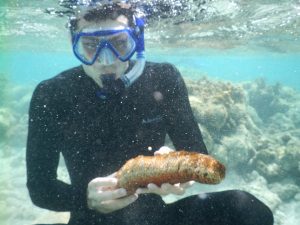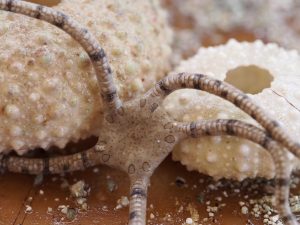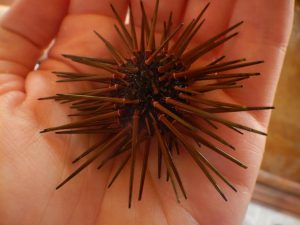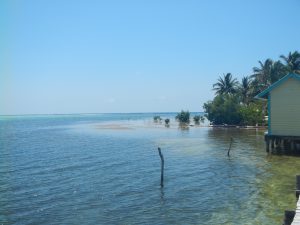It can take very little to shift a perspective.
Five days ago when I snorkeled for the first time, I felt overwhelmed with the entire situation. My mind was overloaded – unable to find the balance between managing my fins and mask, observing my surroundings, staying afloat, and not getting water in my snorkel tube at the same time.
Each day marked an increased fluidity in the water, but this morning, I felt much more capable than ever before. I could focus less on the technical and more on the experience. This, in addition to the abundance of lively fish at the backreef, created an extremely rewarding explorative experience.
Today’s reef was shallow with large mounds of coral, saturated with brightly colored fish swimming in every direction. The fish were juveniles and adults, swimming individually or in schools, and represented every shade of color imaginable.
I encountered many noteworthy creatures today at the reef – two more donkey dung sea cucumbers (Holothuria Mexicana) covered in algae, as well as urchins (Class Echinoidea) and many brittle stars (Class Ophiuroidea) underneath rubble. The sea cucumber and urchins were sedentary, but the brittle stars scrambled to conceal themselves as soon as they were exposed. Size-wise, the urchins were on the small side, hovering about two inches in diameter, while both sea cucumbers were over a foot long. The brittle stars ranged from two-inches in diameter to about seven inches in diameter.

I spotted another porcupine fish (Diodon hystrix) concealed under a rocky ledge. There were also many yellow-tail snapper (Ocyurus chrysurus) swimming around in groups. Today’s most vivid sighting was a scorpionfish (Genus Scorpaena), cryptically colored in shades of brown and beige to assimilate into the seafloor.
Today, I realized my own perspective shift. Snorkeling no longer felt foreign to me, and I could fully immerse myself in the rich aquatic life surrounding me, creating my most fulfilling experience yet.
I am more excited than ever to see what tomorrow will bring.






